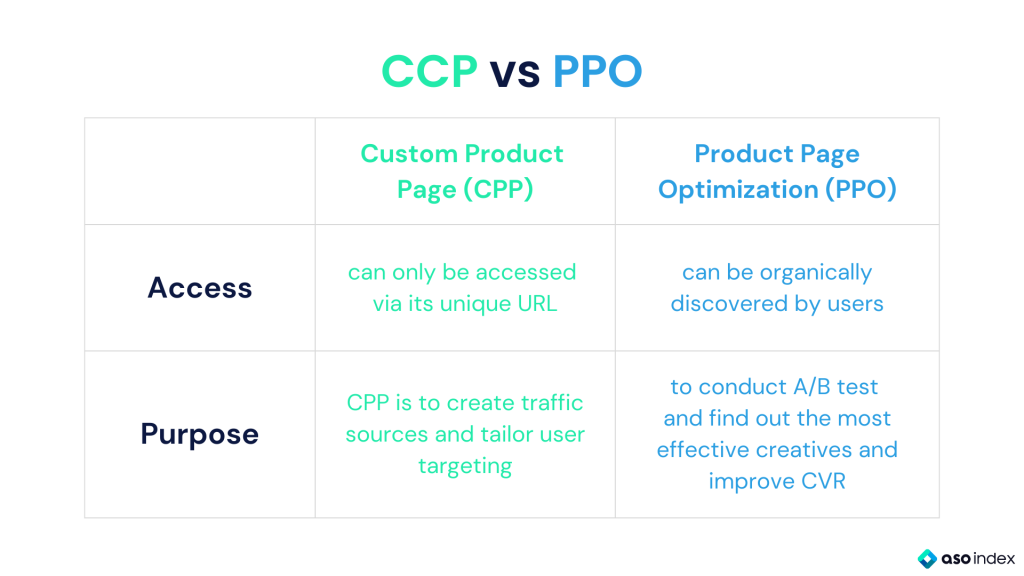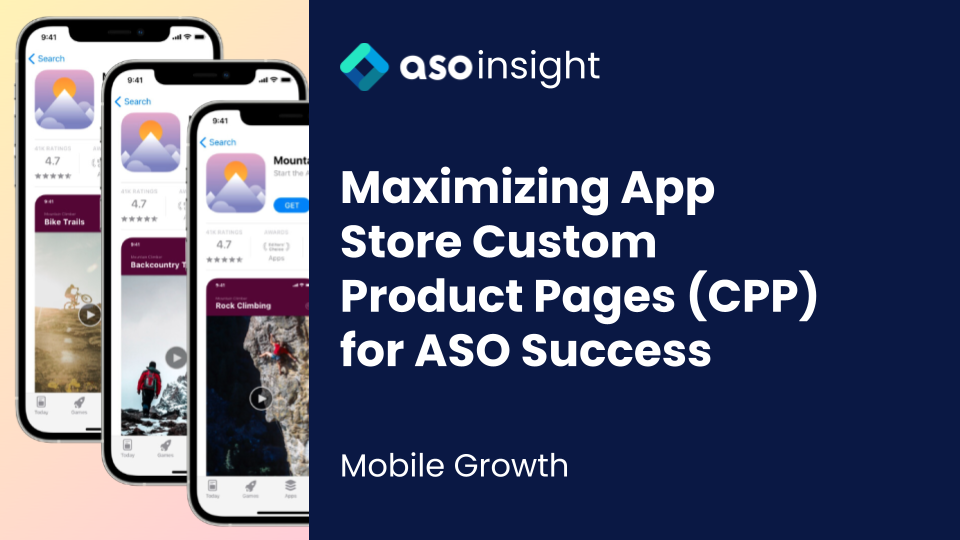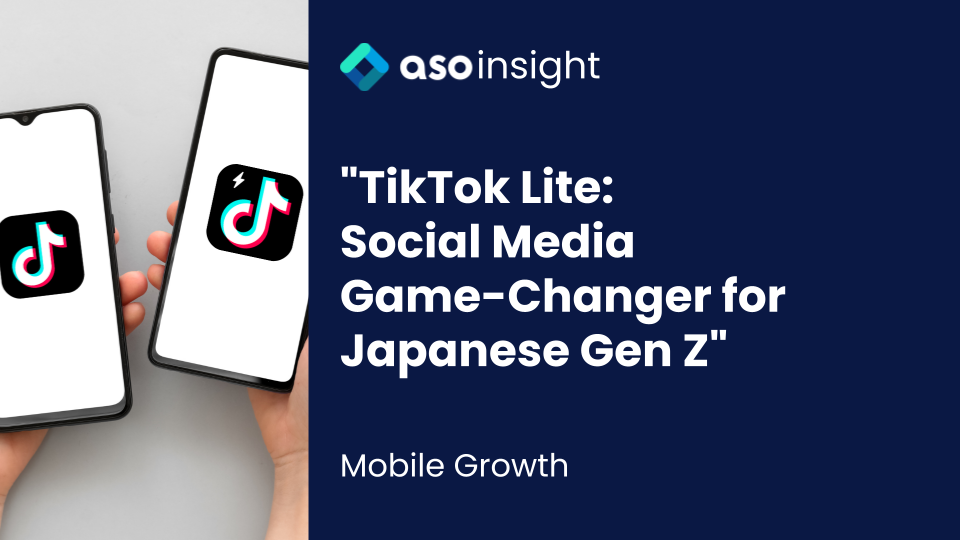Introduction
In the ever-evolving landscape of mobile app marketing, developers are constantly seeking new ways to stand out and reach their target audiences effectively. App Store Custom Product Pages (CPP) have emerged as a valuable tool in this endeavor. In this article, we will delve into the world of CPP, understand what it is, explore how it differs from Product Page Optimization (PPO), and highlight its significance in the realm of App Store Optimization (ASO).
Contents
What are Custom Product Pages?
Custom Product Page, or CPP, is a powerful feature offered by Apple that allows developers to create tailored product pages specifically designed for showcasing particular aspects of their app. Whether it’s a specific sport, character, show, or gameplay feature, CPPs enable you to target niche audiences with precision.

Key points about CPP
- Unique Customization: CPPs can be customized to highlight specific features, using unique screenshots, promotional text, and app previews that differ from the default product page.
- Pre-Order Availability: Apps that are available for pre-order can also utilize CPPs, making them an integral part of your pre-launch marketing strategy.
- Multiple Pages: You can create up to 35 custom product pages for a single app published on the App Store at a time, allowing for extensive targeting and experimentation.
- Unique URLs: Each CPP is associated with a unique URL, enabling you to direct users from different advertising channels to tailored product pages. This is particularly useful for targeted marketing efforts.
- Search Results Ads (ASA): CPPs can be set as search results ads using Apple Search Ads, making it possible to craft specific messages and images for various audience segments.
Custom Product Page (CCP) vs. Product Page Optimization (PPO)

While both CPP and Product Page Optimization (PPO) contribute to app visibility and user acquisition, they serve distinct purposes:
- Access: CPP can only be accessed via its unique URL, while a regularly optimized PPO can be organically discovered by users.
- Purpose: PPO primarily focuses on conducting A/B tests to identify the most effective creatives and improve Conversion Rate (CVR). In contrast, CPP’s primary role is to create targeted traffic sources.
Usefulness of CPP
Understanding the practical applications of CPP is crucial in harnessing its potential for ASO success:
- Enhanced ASA Campaigns: CPP can be used effectively in Apple Search Ads (ASA) to target specific keywords. By tailoring a CPP for a particular keyword, you can achieve a better Conversion Rate (CVR), resulting in increased impressions and downloads. This, in turn, positively impacts organic visibility as improved metrics trigger the App Store’s algorithms.
- Editorial Exposure: CPPs have the potential to be featured in curated selections on the Today, Games, or Apps tabs of the App Store, further enhancing your app’s visibility and reach.
Conclusion
In the world of app marketing, every advantage counts. Custom Product Pages (CPP) are an essential element that deserves full utilization to maximize your Apple Search Ads (ASA) campaigns as well as your overall App Store Optimization (ASO) success. Understanding what CPP offers, how it differs from Product Page Optimization (PPO), and leveraging its benefits can give your app a competitive edge in the crowded app marketplace. So, embrace CPP to tailor your app’s message to different audiences, enhance your ASA campaigns, and ultimately drive more downloads and success for your mobile app.
Take a look at these…
- Maximizing In-App Events feature of App Store could help your ASO as well. Have a look at our recent article taking about App Store In-App Events: Its Benefits and Effects on ASO.
- Need help with your ASO? Get in touch with us to see how we can help you.
- ASO index is an ASO tool that provides you with rich insight and real-time market trends of app stores and aids you in optimizing your app through our kin analysis of keywords and various elements of the app market. You can get your free trial here.






